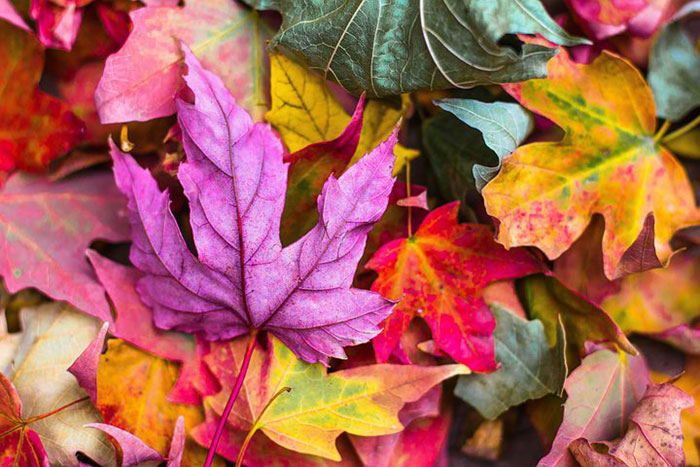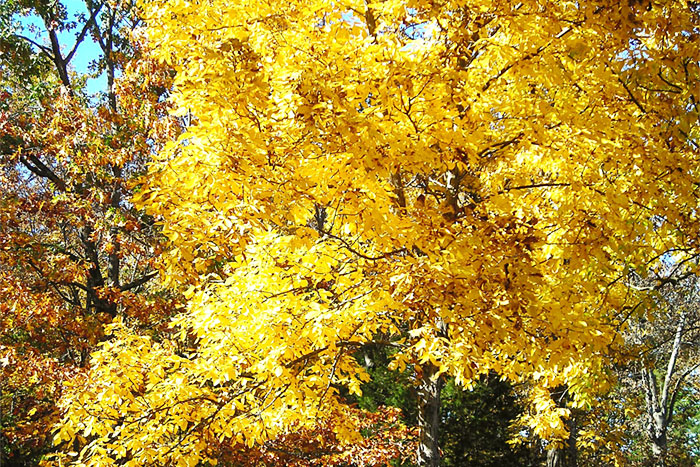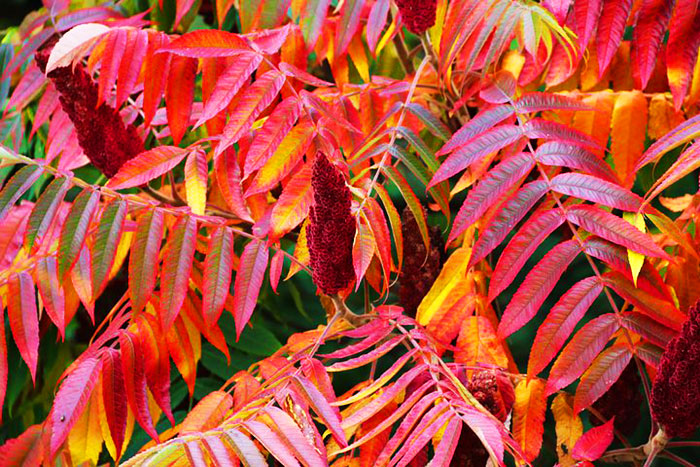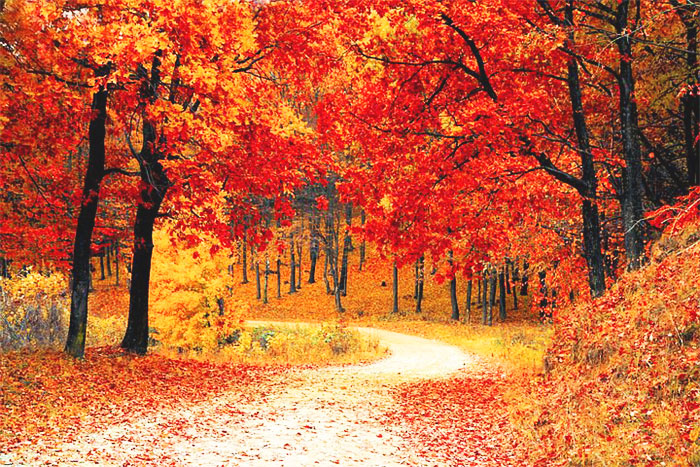
Credit: Pixabay
Missouri's forests are in the process of transitioning into a polychromatic display of color. The foliage of trees, shrubs and vines is about to burst into its full seasonal glory. Colors usually peak around the third weekend of October but it's always questionable until the last minute what will happen. Someone once compared fall leaf color to Christmas morning. You don't know if you are going to get an orange or a lump of coal in your stocking. Like Christmas morning, we know it will be nice, but some years are better than others. To understand why, one must delve into the science behind fall leaf color.
Fall leaf coloration is an artifact of deciduous woody plants' preparation for winter. Woody plants must go through the processes of dormancy and hardening (in sequence) if they are to survive a cold winter. Dormancy is triggered by daylength and hardening by temperature. Dormant trees that are not hardened will not withstand cold temperatures. Trees cannot harden before they go dormant.
Although scientists do not know all the details, they do know enough to explain the basics to help nature lovers enjoy the kaleidoscopic display that occurs as trees go dormant in the autumn. The three main factors that influence fall leaf color include plant pigments, photoperiod, and weather conditions.

Fall leaves can appear in a kaleidoscope of colors. Credit: Pixabay
The timing of color changes and the onset of falling leaves is primarily regulated by the calendar as nights become longer. None of the other environmental influences (e.g., temperature, rainfall, and food supply) are as unvarying as the steadily increasing length of night during autumn. As days grow shorter, and nights grow longer and cooler, biochemical processes in the leaf begin to paint nature's autumn palette.
A color palette needs pigments, and there are three types of pigment that are involved in autumn leaf color: carotenoids, anthocyanin, and chlorophyll. The carotenoids (carotene and xanthophyll) produce yellow, orange, and brown colors in such things as corn, carrots, and daffodils, as well as buttercups and bananas. Although present in the leaf throughout the summer, the carotenoids are hidden by chlorophyll.

Hickory is an example of a species whose fall color is dominated by carotinoid pigments.
The word anthocyanin is derived from Greek words which, literally interpreted, mean "dark blue flower." The color of anthocyanins varies according to pH and can be red, purple, or blue. Anthocyanins are responsible for the coloration familiar things as cranberries, red apples, concord grapes, blueberries, cherries, strawberries, and elderberries.

Many maples are noted for their red fall color which is due to the pigment anthocyanin. Credit: Pixabay
Finally, a convincing argument could be made that chlorophyll is the most important plant pigment of all. Chlorophyll absorbs both the blue and the red wavelengths from sunlight and reflects the green wavelengths. Thus, leaves appear green throughout the summer as the chlorophyll they contain enables plants to carry on photosynthesis. The latter is the use of water and carbon dioxide with energy from sunlight to manufacture sugars for food and evolve oxygen.
Both chlorophyll and carotenoids are present in the chloroplasts of leaf cells throughout the growing season. Most anthocyanins are produced in the autumn, in response to bright light and excess plant sugars within leaf cells.
During the growing season, chlorophyll is continually being broken down and regenerated. As night length increases in the autumn and deciduous woody species prepare for dormancy, an abscission layer which clogs vascular tissue is formed between a leaf and the twig that holds it. This abscission layer traps sugars in leaf tissue which are converted to anthocyanin. It also slows and ultimately halts chlorophyll production. However, chlorophyll in the leaf continues to break down and ultimately is totally depleted. At this time, the carotenoids and anthocyanin that are present in the leaf are unmasked and show their colors. Once the abscission layer is complete and the connecting tissues are sealed off, the leaf is ready to succumb to gravity and drop.
The timing of the color change is under genetic control and varies by species. For example, sassafras and sumac can become vividly colorful in early fall in Missouri while most other species are still relatively green. In contrast, most oaks show their colors long after other species have already shed their leaves.

Sumac is an example of a species whose leaves turn color very early in the fall. Credit: Pixabay
These differences in timing among species seems to be inherited, for a particular species at the same latitude will show the same coloration in the cool temperatures of high mountain elevations at about the same time as it does in warmer lowlands.
The amount and brilliance of the colors that develop in any particular autumn season are related to weather conditions that occur before and during the time the chlorophyll in the leaves is dwindling. Temperature and moisture are the two main influences.
A succession of warm, sunny days and cool, crisp (but not freezing) nights seems to bring about the most spectacular display of fall foliage color. During these days, lots of sugars are produced in the leaf but the cool nights and the gradual closing of veins going into the leaf prevent these sugars from moving out. These conditions (abundant sugar and light) promote the production of the brilliant anthocyanin pigments, which tint leaves red, purple, and crimson. Because carotenoids are always present in leaves, the yellow and gold colors remain relatively constant from year to year.
The amount of moisture in the soil also affects autumn colors. Like the weather, soil moisture varies greatly from year to year. The countless combinations of these two highly variable factors assure that no two autumns can be exactly alike. A late spring, or a severe summer drought, can delay the onset of fall color by a few weeks. A warm period during fall will also lower the intensity of autumn colors. In short, a warm wet spring, favorable summer weather, and warm sunny fall days with cool nights normally produce the most brilliant autumn leaf colors.
Fall leaf coloration is a phenomenon that can be experienced only for a short time each year. The ephemeral nature of this display is something that makes it even more special. Make plans now to witness nature in its most colorful state before the season passes.

A leisurely drive through a brightly colored forest in fall is an unforgettable experience. Credit: Pixabay
Credit: Adapted from an article by the Forest Service, United States Department of Agriculture.